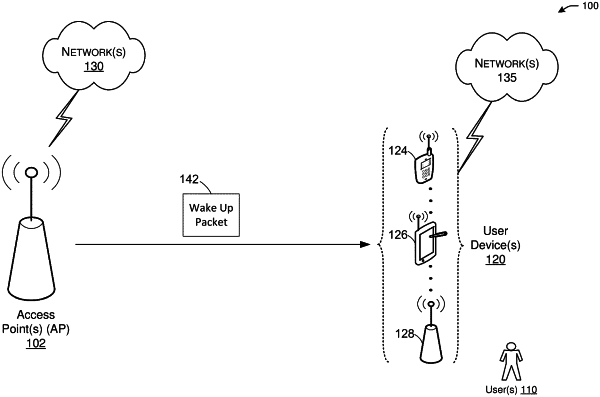| CPC H04W 52/0235 (2013.01) [H04B 7/2621 (2013.01); H04W 52/0216 (2013.01); H04W 52/0229 (2013.01); H04W 52/0274 (2013.01)] | 20 Claims |

|
1. A device, the device comprising processing circuitry coupled to storage, the processing circuitry configured to:
receive a wake-up frame on a frequency division multiple access (FDMA) operating channel, wherein the wake-of frame comprises a legacy preamble, a wake-up data field, and an optional padding portion based on a length of the longest wake-up frame sent from an AP, wherein the padding portion is utilized to standardize the transmission duration across various 20 MHz channels;
decode a legacy signaling (L-SIG) field from the wake-up frame to extract a length value associated with the wake-up frame, wherein the length value is equal to a second length value of a second wake-up frame sent from an access point (AP) to a second station device (STA), wherein L-SIG indications of the various 20 MHz transmissions are set to a same value;
select a first indication of a first transition delay to start communication after receiving the wake-up frame;
receive from the AP an indication of a transmission schedule based on the first transition delay; and
transmit, based on the transmission schedule, a data packet to the AP in response to the wake-up frame.
|